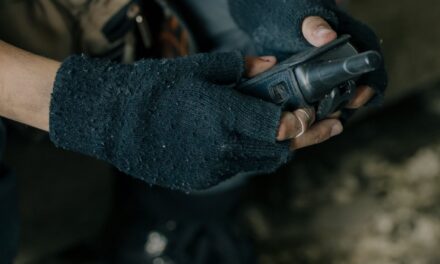Adventuring or surviving in cold climates demands not just courage and determination but also the right gear. Whether you’re planning a trek through the snowy landscapes of the Arctic, preparing for a winter camping trip, or simply gearing up for unexpected cold weather emergencies, selecting appropriate survival gear is crucial. The harsh environmental conditions characteristic of cold climates pose unique challenges that require specialized equipment and clothing to ensure safety, warmth, and survival.
The stakes in cold weather survival are inherently high. Exposure to extreme cold without adequate protection can lead to hypothermia, frostbite, and other serious health risks. Therefore, the gear you choose must serve multiple purposes: it should retain heat, minimize moisture, and maximize functionality while being durable and lightweight. This article dives deep into the essentials of choosing survival gear that stands up to the rigors of cold climates, blending expert advice with practical tips to equip you for the icy challenges ahead.
Survival in cold climates is about understanding and adapting to the environment. The right gear can mean the difference between a successful adventure and a perilous ordeal. From thermal clothing to shelters and emergency supplies, each item plays a pivotal role in building a comprehensive survival kit. Here, we will explore how to assess gear based on material, design, and suitability for cold environments, ensuring you make informed decisions that enhance your preparedness and safety.
Join us as we outline the critical factors to consider when selecting survival gear for cold climates, providing you with the knowledge to choose wisely and confidently. Whether you’re a seasoned explorer, a winter sports enthusiast, or someone who wants to be prepared for any situation, understanding the nuances of cold-weather gear is essential for anyone venturing into the chill.
Continuing with the in-depth explanations about choosing the right survival gear for cold climates:
Detailed Guide to Selecting Survival Gear for Cold Climates
Thermal Clothing: Layering for Warmth
Effective layering is your first defense against the harsh cold. The layering system typically consists of three key components: a base layer that wicks moisture away from your skin, a middle insulating layer that traps heat, and an outer layer that shields you from wind and moisture. Opt for materials like merino wool or synthetic fibers for the base layer, fleece or down for insulation, and waterproof, breathable fabrics for the outer shell.
Footwear: Balancing Warmth and Mobility
Your choice of footwear is critical in cold climates. Look for boots that are insulated, waterproof, and provide excellent traction. The boots should be roomy enough to accommodate thick thermal socks without compromising circulation. Features like thermal insoles and reinforced toe areas add additional protection and comfort.
Hand Protection: Gloves and Mittens
Protecting your hands is vital for maintaining dexterity and preventing frostbite. Mittens offer superior warmth by keeping fingers together, which increases heat retention, whereas gloves provide better agility. Consider gloves with a waterproof outer layer and a removable insulated liner for versatility in varying conditions.
Head and Face Protection
Heat loss from the head and face can significantly affect body temperature. A balaclava can cover your head, neck, and face, providing essential warmth and protection against biting winds. Additionally, thermal hats made of wool or fleece should always be included in your cold-weather kit.
Survival Equipment: Shelters, Sleeping Bags, and More
For overnight trips or emergencies, a suitable shelter is key. Invest in a four-season tent that can withstand heavy snow and strong winds. Sleeping bags rated for temperatures lower than the coldest expected conditions are essential. Look for bags with hydrophobic down or synthetic fill to maintain insulation when wet.
Emergency Supplies and Tools
Your survival gear should include tools and supplies that can aid in navigation, emergency repairs, and signaling for help. Items like a reliable GPS device, multi-tool, and solar-powered charger are indispensable. Additionally, always carry a fire starter kit capable of functioning in wet conditions and high-energy snacks that won’t freeze.
Expert Insights on Gear Selection for Cold Weather Survival
Experts emphasize the importance of quality and reliability when choosing gear for cold climates. They recommend:
- Testing Gear Pre-Trip: Always test new gear in controlled environments before taking it into extreme conditions.
- Research and Reviews: Invest time in researching products and reading user reviews to ensure gear has been tested and approved by fellow outdoor enthusiasts.
- Redundancy: Carry backups for critical items like gloves and fire starters to prepare for potential loss or failure.
Choosing the right gear involves balancing cost, functionality, and weight. While high-quality gear can be expensive, the investment significantly enhances safety and comfort in cold environments. Making informed, strategic decisions in your gear selection can empower you to face the harsh conditions of cold climates with confidence.
Conclusion: Preparing for the Cold with the Right Survival Gear
Preparing for survival in cold climates requires careful consideration and selection of appropriate gear. The right equipment not only enhances your comfort but can be lifesaving in extreme conditions. By prioritizing thermal clothing, proper footwear, and protective accessories, and supplementing them with reliable shelter and emergency supplies, you can significantly increase your chances of thriving in harsh winter environments.
Key Takeaways for Choosing Survival Gear for Cold Climates:
- Layer Wisely: Employ a smart layering strategy with appropriate materials for each layer to optimize warmth and moisture management.
- Invest in Quality Footwear: Choose boots that offer insulation, waterproofing, and support to protect your mobility in snowy or icy conditions.
- Protect Extremities: Use gloves and mittens to safeguard your hands, and don’t overlook the importance of head and face coverage.
- Reliable Shelter and Sleep Systems: Opt for durable, insulated shelters and sleeping bags that are designed for below-freezing temperatures.
- Essential Tools and Supplies: Equip yourself with navigation aids, emergency tools, and fire-starting kits that perform well in cold and wet conditions.
Understanding and integrating these elements into your preparation strategy can transform a potentially perilous cold-weather outing into a manageable, even enjoyable experience. Survival in cold climates is less about enduring hardship and more about preparing adequately with the right tools and knowledge.
As we wrap up this guide on selecting the right survival gear for cold climates, remember that each piece of gear is a link in your survival chain. Strong, reliable gear forms a strong chain, ensuring that you are as prepared as possible for whatever cold weather adventures or challenges lie ahead. Equip yourself wisely, and embrace the beauty and rigor of the winter wilderness with confidence.








